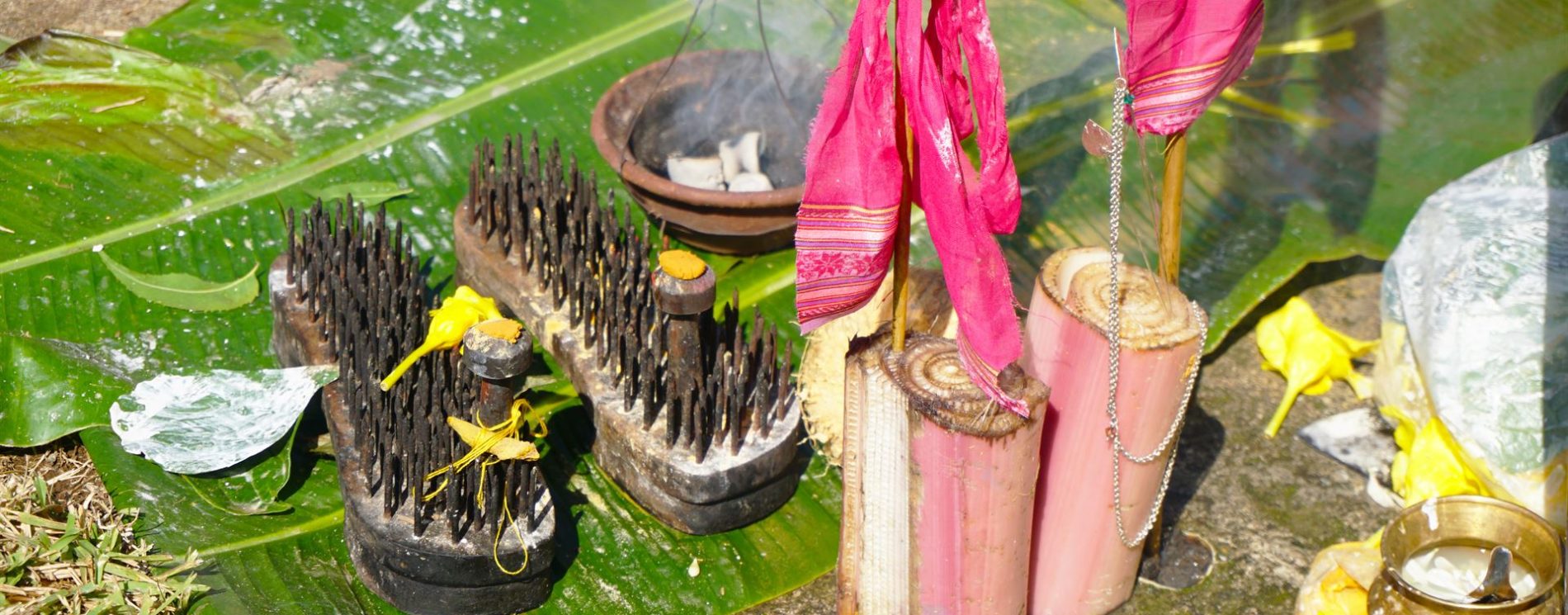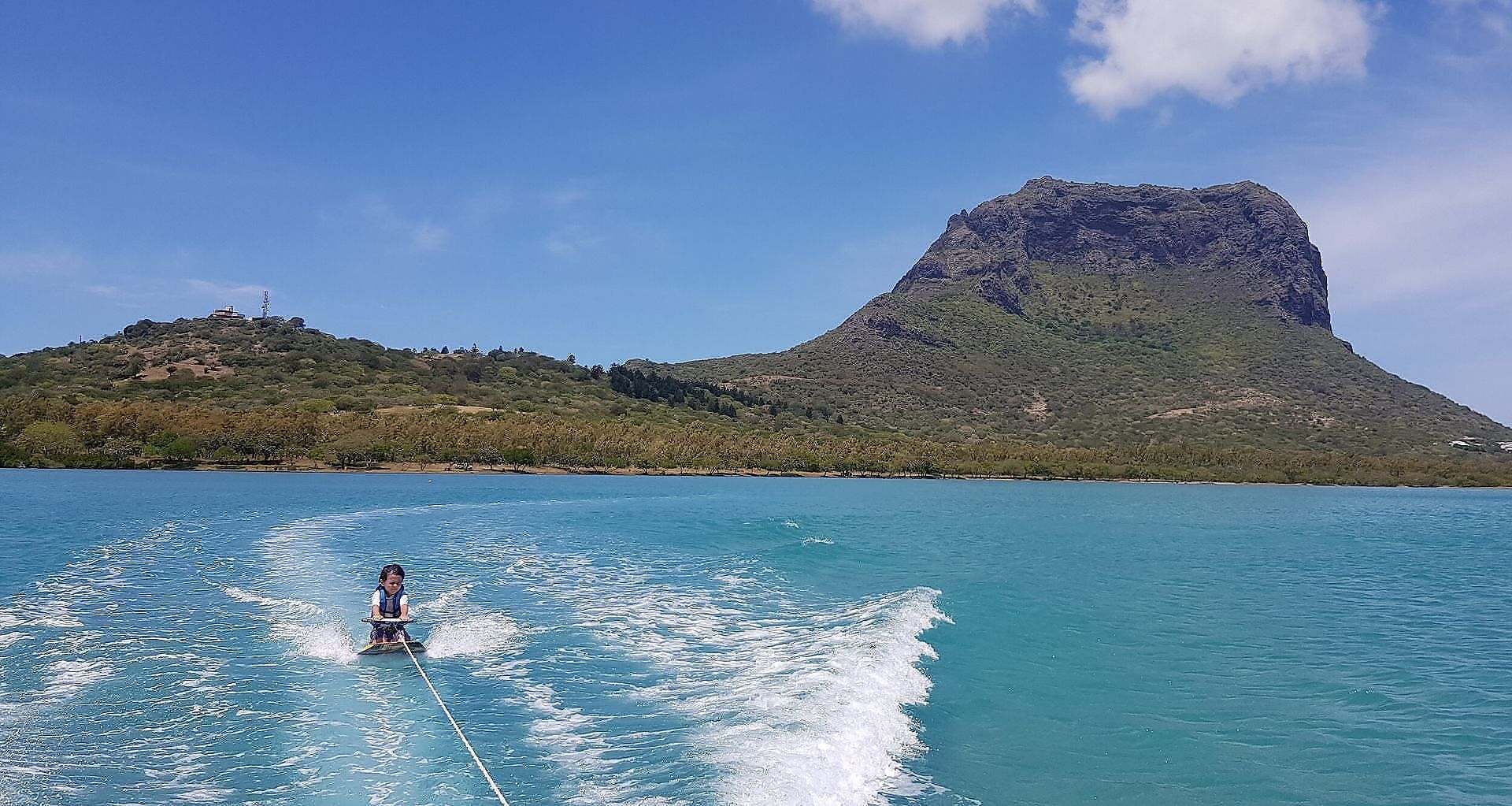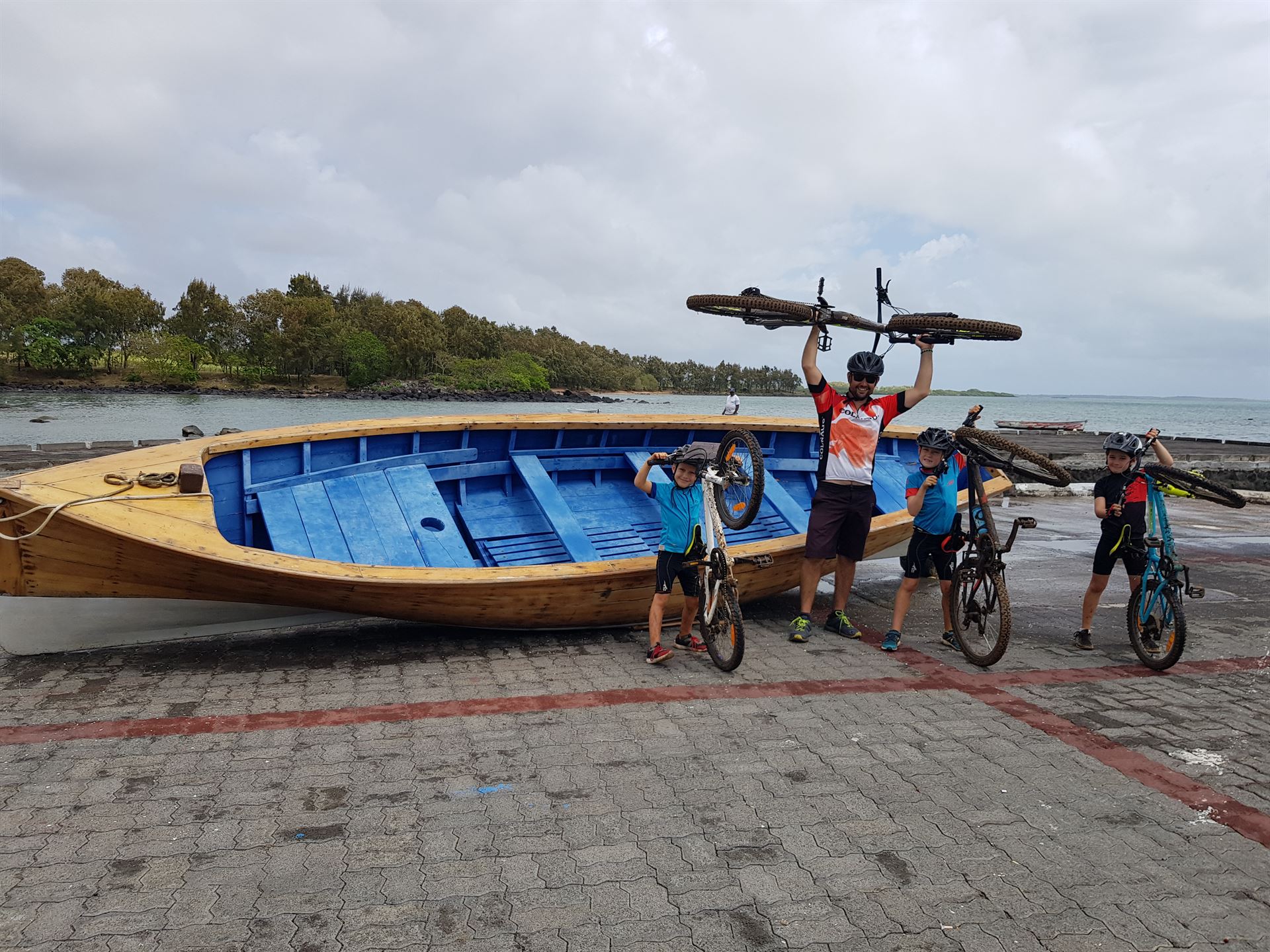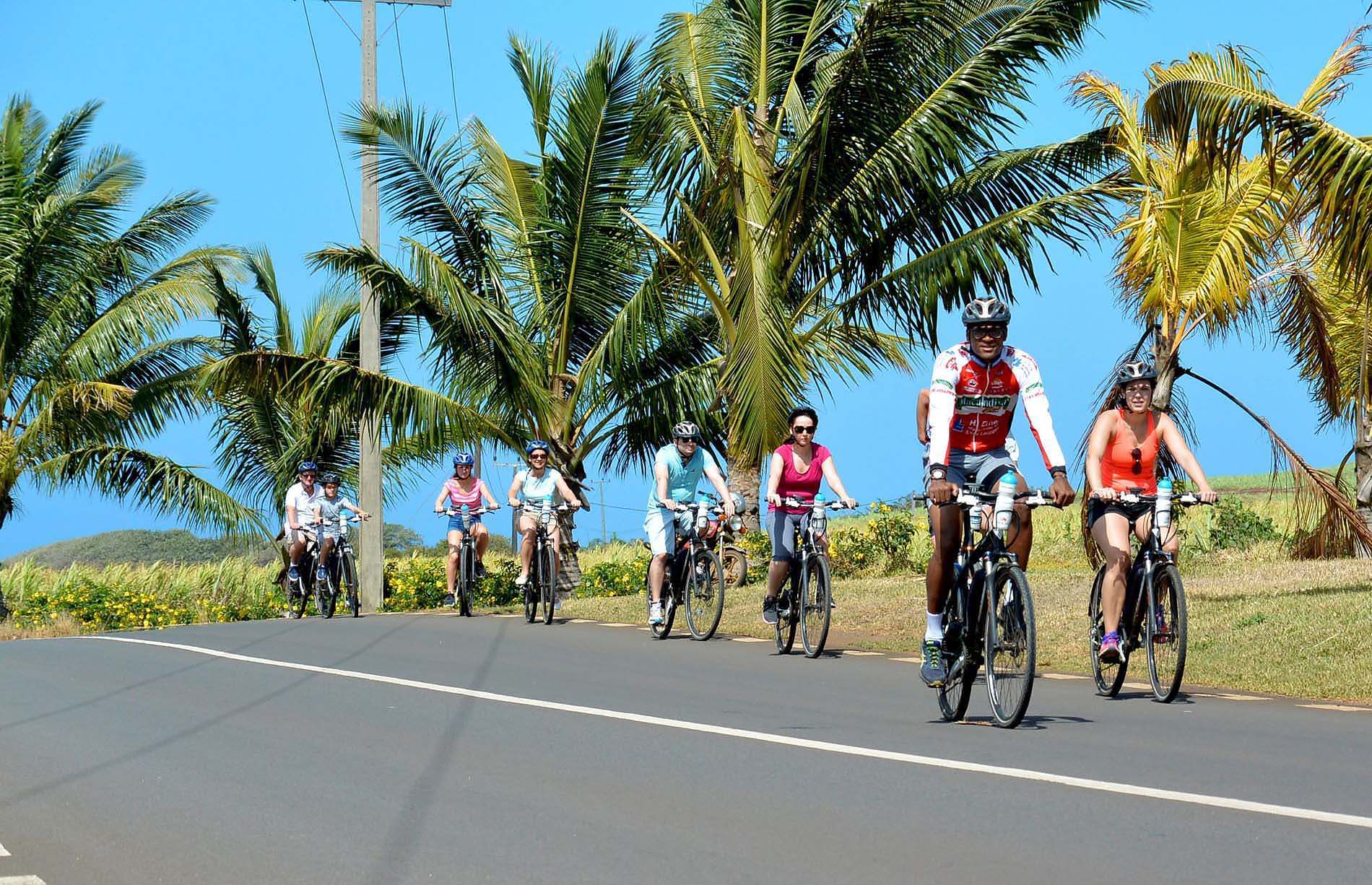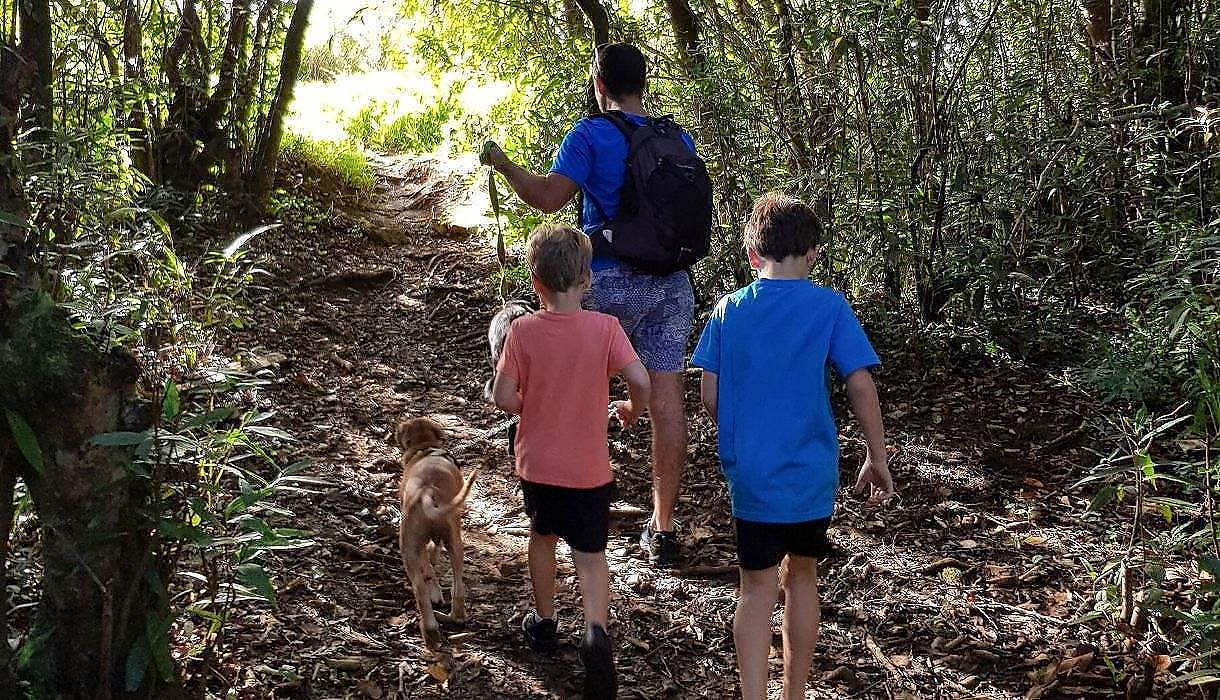At the roots of millenary traditions
Monday 21 January is Cavadee’s birthday and Laurent and I decide to live a unique experience in Mauritius, even for Mauritians. Thaipoosam Cavadee is a festival of Tamil origin that marks the end of ten days of fasting. On this occasion the participants make a pilgrimage to the temple to make offerings and purify themselves. It is celebrated in the Tamil month of Thai (January – February) on a full moon day and on the day of the star Poosam. This festival is dedicated to Murugan or Mourouga, son of Shiva and the goddess Parvati. The bodies of penitents are pierced with needles that symbolize the spear of their God. Prayers are recited throughout the ceremony and this celebration celebrates the victory of Good over Evil. Mourouga is the head of the celestial armies, deity of youth and war. He is mounted on a peacock, snake destroyer (body attachments…) and brandishes the Vel, the spear whose three parts (rod, wide part of the iron and tip) are power, intelligence and victory.

Penitents carry offeringsto thank their divinity for its benefits, and they carry cavades. Traditionally arched, a Cavadee is generally made of bamboo and would reproduce the ancient writing of the word “OM”, thus giving it a mystical meaning. The arch is decorated with flowersand a portrait of the divinity during the procession.

The Cavadee festival is a very important moment in the lives of the faithful. Originally from southern India, this Tamil festival is the most impressive in the Mauritian religious calendar. If you are on holiday in Mauritius at this time of year, between January and February, find out about the dates and places of pilgrimage and go there! Visitors, Mauritians and tourists alike, are always very welcome and more than one person will be happy to explain the different rituals.
But be careful of sensitive people: this pilgrimage is very impressive, especially for children. If you do not feel comfortable, do not disturb the pilgrims and leave. But know that the ceremony lends itself to absolutely sublime photos and videos!

A moment of shared fervour
For us, the encounter with the different cultures that we find in Mauritius is essential. Understanding the different rites therefore seems essential to us if we want to live in harmonywith each other, and thus we will be able to share our knowledge with French friends on holiday in Mauritius.

Every year, Mauritians celebrate about twenty religious holidays, whether they are Catholic (such as Father Laval’s pilgrimage or the Assumption), Muslim (Eid Mubarack or Abraham’s sacrifice), Tamil (Cavadee), Hindu (Great Basin pilgrimage, Rhaki brothers and sisters’ day…) or Chinese (Chinese New Year, Double 10…)
It therefore seemed important to Laurent and I to better understand the celebrations of our compatriots of different faiths. It is not only enriching but also, and above all, a good way to meet our compatriots in the most intimate, deepest aspects of their lives. Moreover, this is what makes Mauritius an extraordinary country, where all the different cultures live together with great respect.
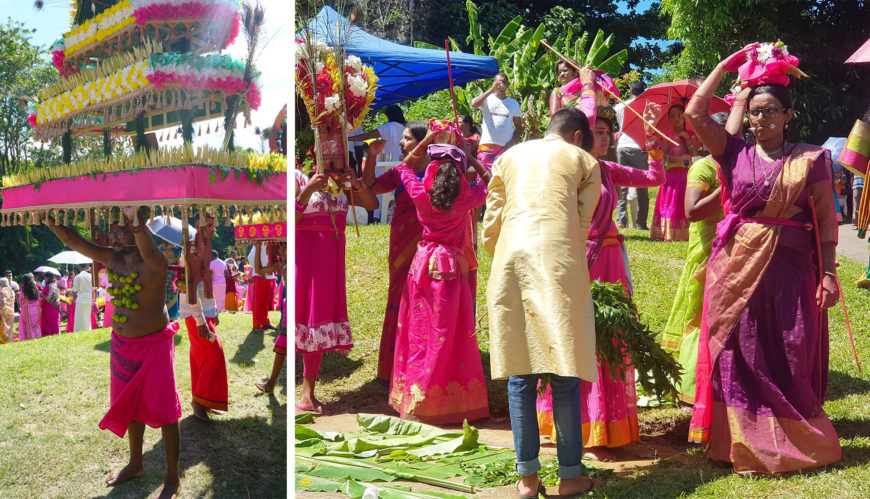
Suriname, one of the high places of the Cavadee
This year we have therefore decided to meet our fellow citizens who are celebrating the Cavadee. To do this we decided to go to Souillac, or more precisely Surinam, in the south of Mauritius. This is an area we know well because one of the electric bike rides that Explore Nou Zil , offers is precisely the discovery of Souillac and its surroundings before sharing a typical Mauritian meal at Mala’s. In order to be able to choose a good site that will allow us to be the privileged witnesses of the Cavadee, we are advised to arrive at 9 am.

We leave Tamarin at 8:30 am and take the splendid southern road that runs along the coast, which has remained quite wild and unspoilt. We cross Black River, La Gaulette, Le Morne, La Prairie, Baie du Cap, Bel Ombre and we enjoy the pleasure of driving. Kathy, Isa and Soan joined us to experience with us this unique cultural activity in Mauritius and rich in encounters.

Mala recommends that we leave room for the pilgrimage and, above all, that we not be intrusive in order to respect the pilgrims and the different rituals as much as possible. The car park is completely saturated, with “pilgrims”, minibuses, taxis and cavadees accumulating. However, we have arrived at the right time, the pilgrims are busy making the final preparations.
Laurent explains to me that pilgrims must prepare their pilgrimages very close to a water point. To avoid having too many people at the same time, each group will meet at a different time.

An impressive ritual of beauty and fervour
Shortly after our arrival, the first pilgrims set off. Our children are immediately amazed by the music, the smell of incense, the multicoloured sarisand the magnificent cavadees. Above all, they are very impressed to see the bodies of men, young and old, pierced by dozens of long needles to which silts are sometimes attached. These needles are hung on the chest, in the back and also on the tongue to prevent them from speaking,… After their long fasting, pilgrims do not seem to suffer at all, some are even in a state of trance in which pain is transcended for the benefit of prayer.
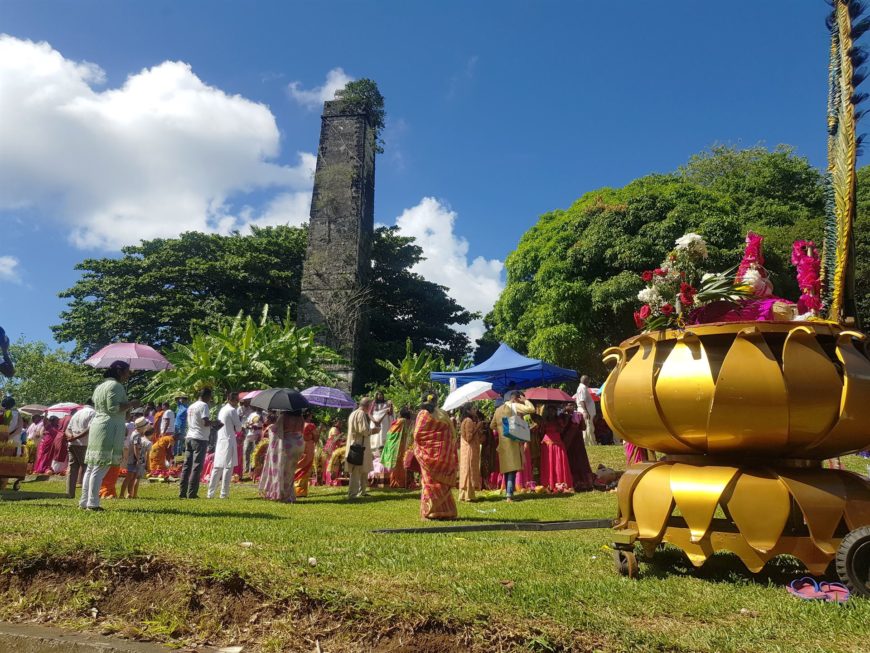
After this first departure, we approached the river and immediately welcomed each other with a little silt juice. Our presence does not seem to bother them. It must be said that we are as discreet as possible and that we find here this exceptional sense of hospitality of the Mauritians.
We see the Tamil priests who prick the different parts of the pilgrims’ bodies according to each person’s request. There is no age or gender to participate in the Cavadee. We saw 7-year-old children, as well as 60-year-old adults.
The sun is strong, it’s hot as hell and we take shelter under the only tree in the area.
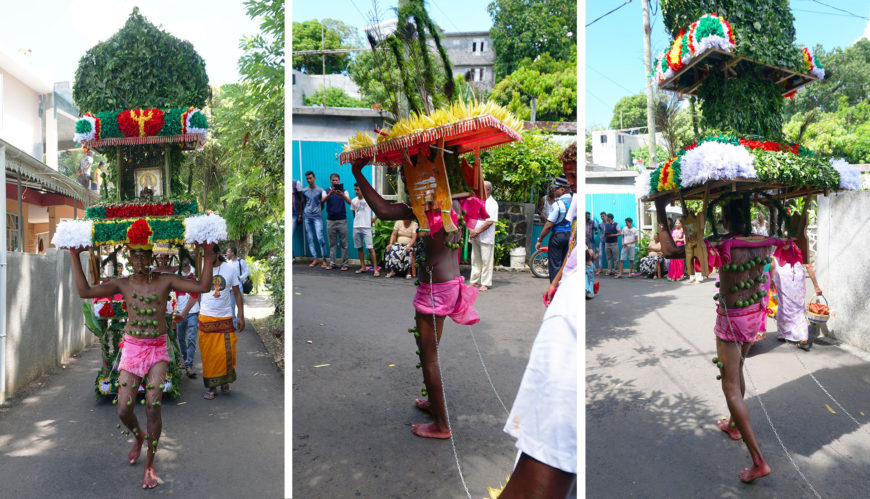
When they arrive at the temple, the pilgrims offer their samboo, a tin container filled with milk, a sacred element of the Hindu and Tamil religions, to the priests who pour it over the deities.

The legend around the Cavadee
Laurent meets Vikah who explains and enlightens us a little more about the story:
” Ena 12 cavadeelor chaque annee, mais ban mauricien pas fete les 12. TaipoosamCavadee, sédernyé dan lané. Lané tamoul comens en avril. ” (There are 12 cavades during the year and TaipoosamCavadee is the last one of the year. The Tamil year begins in April).
He then tells us the legend:
The legend behind this ritual is that Lord Shiva gave two hills – Shivagiri Hill and Shaktigiri Hill to Sage Agastya and asked him to place them in South India. The wise man asked his disciple Idumban to carry the hills to their destination. The disciple used a beam and tied the two hills to each end. He then carried the beam on his shoulder. After covering half the way, he laid the beam with the hills to rest. After some time, he got up to resume his journey and was unable to move the hills because they had become too heavy. As he was trying to pick up the hills, he saw a boy in front of him and asked for his help. The boy refused, saying that the hills belonged to him. This idumban was annoyed and a fight broke out between him and the boy. During the fight, Idumban realized that the boy was none other than Lord Murugan. He (Murugan) had been the only one to increase the weight of the hills. Idumban was killed in the fight. But Murugan showed pity and resigned Idumban who then became his greatest devotee. So, on that day, anyone who carried Kavadi or cavadee (weight meaning the two hills) on his shoulder at Murugan Temple received his blessings.
Now the priests will attach a container filled with milk to each cavadee. If the milk is still good when you arrive at the temple, it is because the person has done his Lent well. Otherwise, it will mean that the person has done it wrong.

After the emotion, the tasting
The heat is hot and the belly is screaming famine. We say goodbye to them reluctantly and resume our walk to go to our friend Mala’s house for lunch with her. On the way, we meet some of the village’s grandchildren whom we know very well, but whom we haven’t seen for a while. Our children are delighted to see them again and to have a little chat with them.

We sit at the table, in the cool… It feels good to sit down a little. Mala is delighted to welcome us and to spend some time together. After quenching our thirst with a good juice, we eat its delicious samoussa, chili cakes and followed by roasts (a galette of Indian origin) served with different curries.

Any noise outside?
Now some of the pilgrims we met earlier at the river are returning home. We rushed to the low wall at Mala’s house to see them leave with their cavadees, exhausted but happy to have been purified.

We ended our day with a sea bath in Riambel. The beach is deserted despite the fact that today is a public holiday. It is true that this is not the most popular beach because of its turbulent sea and strong current.
Laurent is so amazed by this Cavadee ceremony that he now offers a discovery of the electric bicycle pilgrimage. An activity that I highly recommend to those who want to live this unique and authentic experience during their vacation in Mauritius.For more information please contact Explore Nou Zil.

